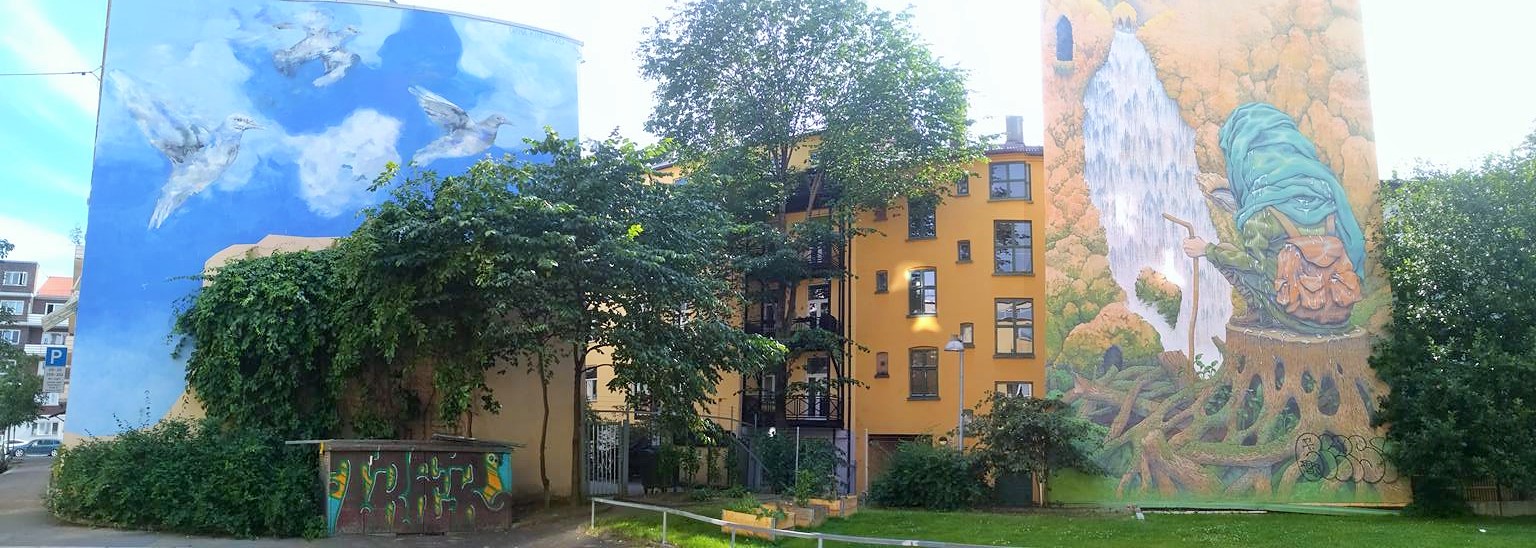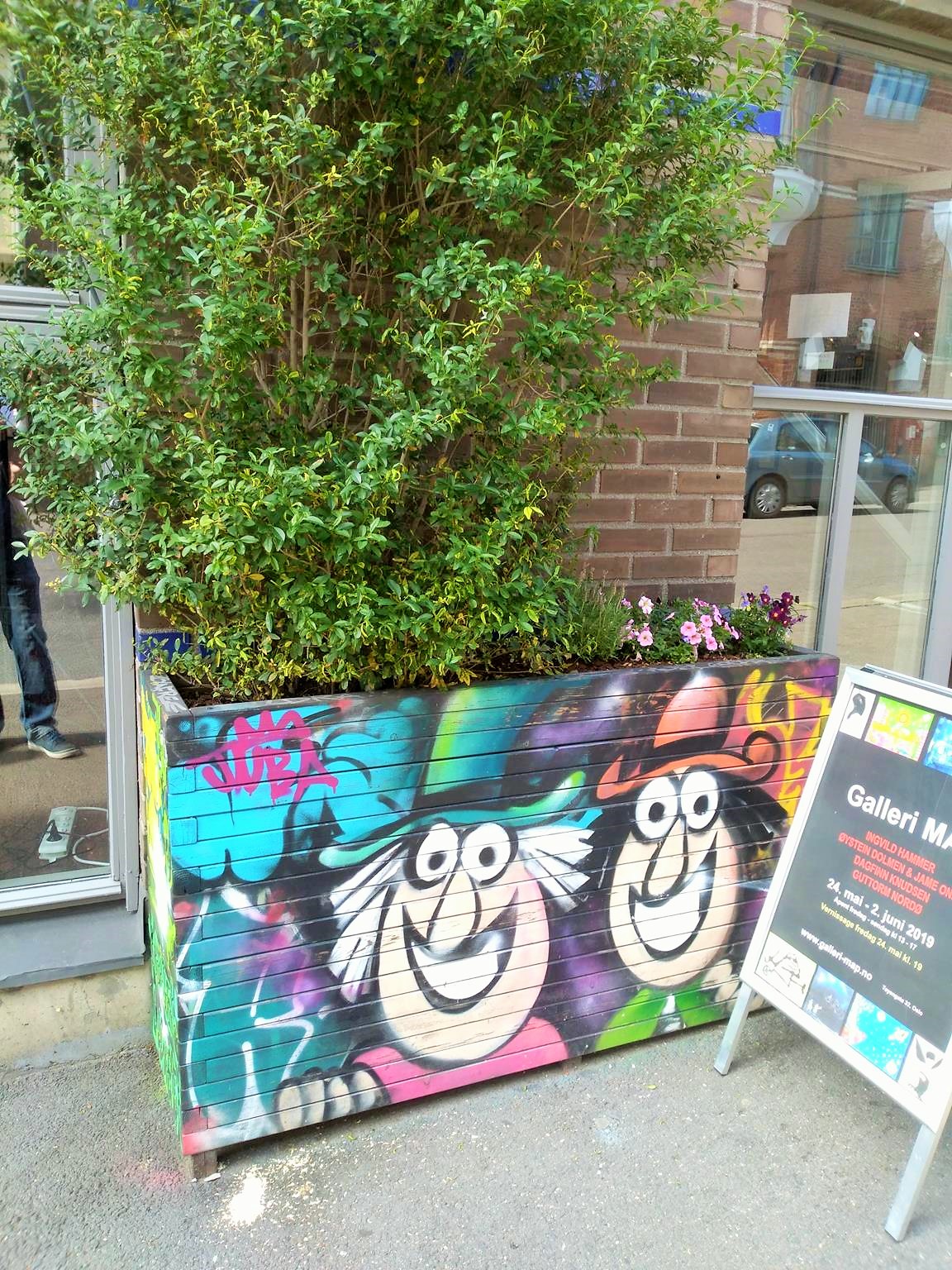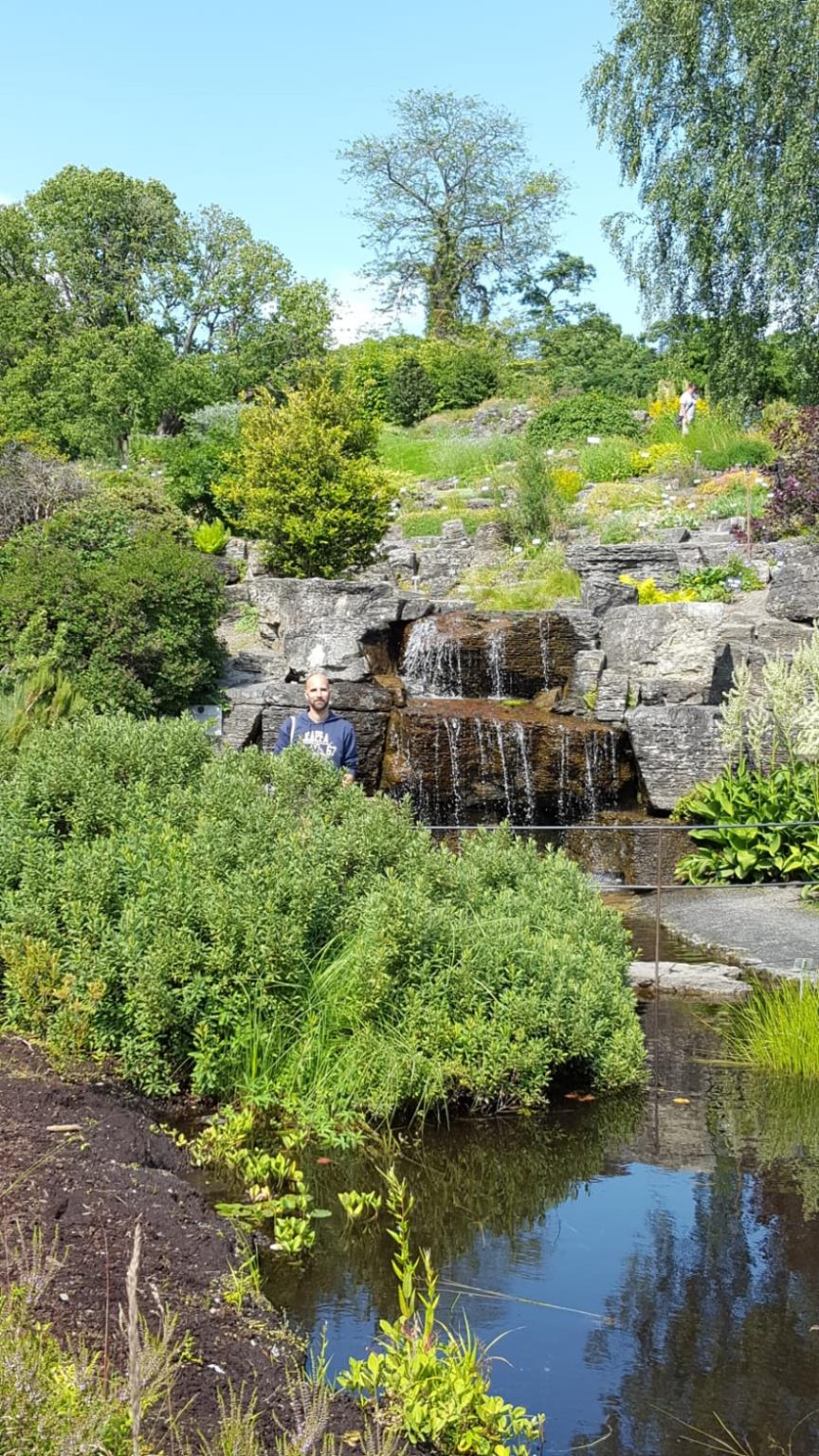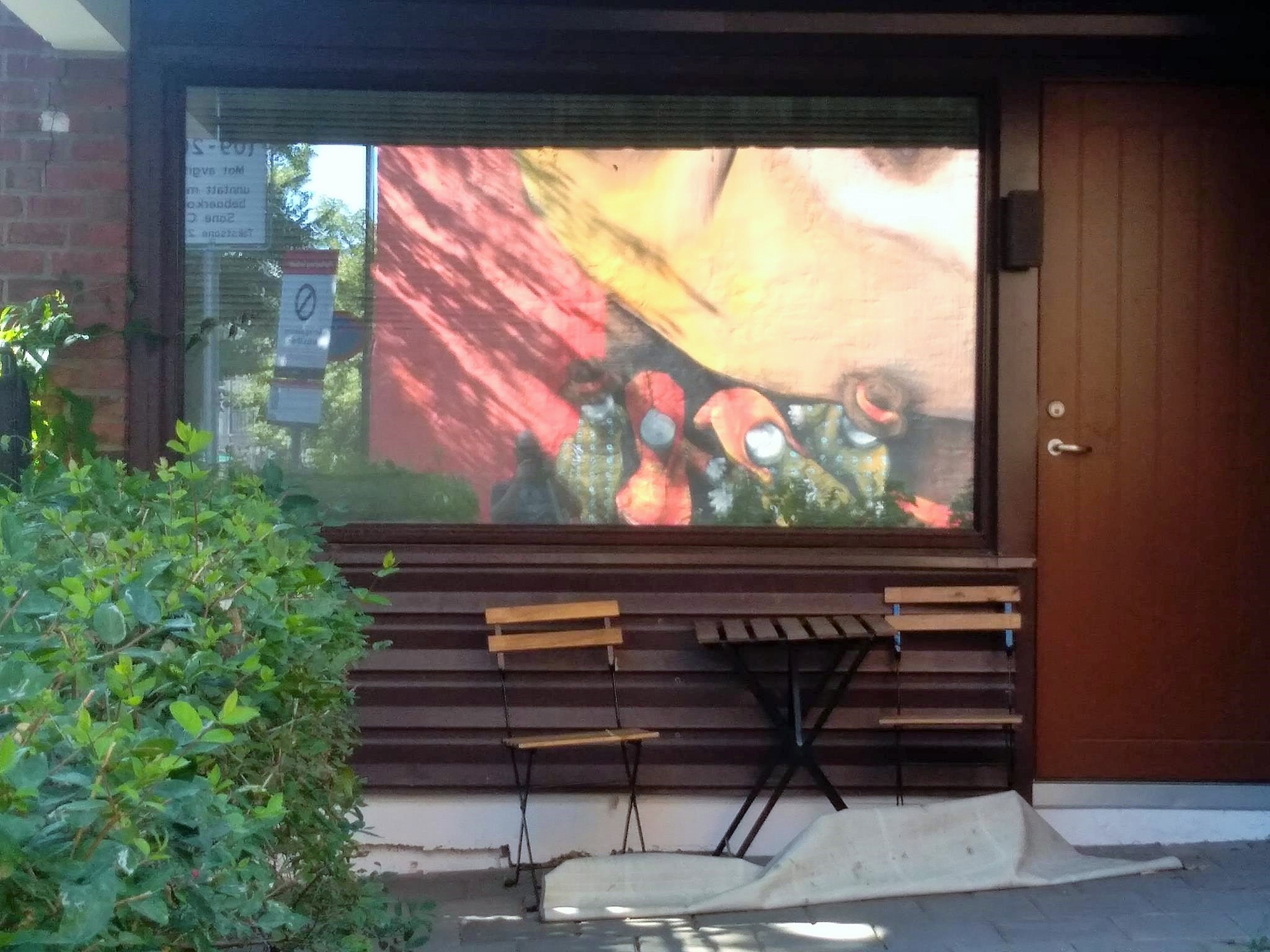Thanks a lot for the contribution of the awesome photo material and nicely written article by Frank Hofmann:
The district of Tøyen is multi-culturally populated, less prosperous and characterised by a lively neighbourhood. Tøyen offers beautiful green areas such as the BOTA-NISH GARDEN and the Tøyen Park. Life prefers to take place on the streets. There are various ethnic shops, great and trendy bars, cafes and nice restaurants. It is bordered to the south by Grønland. Tøyen has many peculiarities. The district is one of the most fascinating and dynamic urban areas of Oslo. This is where the bear really steps! Tøyen should be at the top of every visitor list in Oslo. Tøyen, Tøyen, we’re going to Tøyen!

Tøyen is busy in the summer and some people enjoy the sun with a good book on the meadows of the green areas, go for a walk or relax in the park. The parks are almost idyllic. In the heart of Tøyen Park is (still) one of Oslo’s main attractions: the museum EDVARD MUNCH, one of Norway’s most famous artists. Cynics would claim to be Norway’s only known international artist.

The painter and graphic artist of Symbolism lived from 1863 to 1944, created quite a lot of works and is considered one of the pioneers of Expressionism, a style epoch of art. Munch was active as a painter for more than 50 years. Munch bequeathed 28.000 objects to the city of Oslo after his death. He enjoys the reputation of an epoch-making new creator. His most famous works were created around 1890, including the world-famous work of art THE SCREAM. The artist has processed the city of Oslo in a few works. A frequently recurring motif is the KARL JOHANS GATE in the center, one of the most famous promenades in the city. The Oslofjord was also processed in images such as THE SCREAM in the background.

It is also interesting that the motifs of his drawings and graphics exist in several versions. Many of his works have to do with love, death and loneliness. EDVARD MUNCH is an absolute must for me. If you can’t make it to the museum, you can also dust a souvenir in the museum’s shop or consume food and drinks in the museum’s café. Or wait until the museum that was built in 1963 is somewhere else. That’s what’s going to happen, it´s already a fixed plan.
The Munch Museum will be relocated from the district in 2020 and a new building will be erected to match his paintings. On the one hand, it is because in 2004 the painting THE SCREAM was stolen from the museum by thieves. That’s too bad. No one thought that was so great, except maybe the thieves. On the other hand, the museum in Tøyen seems to have been extremely unpopular with curators and Munch connoisseurs. This will be a severe loss for the district, but fortunately the course was set for Tøyen at an early stage.

In short, the new museum is a building that is bowing. Yes, I do. Ladies and gentlemen, you have heard correctly! That’s where the skull blanket flies away. The next expensive building. The German architect JENS RICHTER from Kassel, together with the architect’s office ESTUDIO HERREROS from Madrid, has designed the largest monographic museum in the world. The museum is dedicated to only one artist: EDVARD MUNCH. In addition to the Oslo Opera, the next cultural magnet is now to be found. To whom the museum bows is clear, on the one hand in front of EDVARD MUNCH and on the other hand in front of the opera as an urban gesture. The architects describe the design as an urban gesture. When it comes to urban culture, Oslo does not want to be international. The addition to beautiful landscapes is created and further developed piece by piece. Just don’t overdo it, but it’s probably time to keep your mouth shut. This will not have been the last billion-dollar project in Oslo.

If the Munch Museum disappears, there won’t be a big cultural gap, because the course for street art in a class of its own was set in the district at an early stage. Here, MURALS of national and international artists and high-calibre artists of the scene cavort on every street corner. WOW! And it’s free. One mural topps the next one and it is extremely profitable for a tour. For Tøyen you should definitely plan a day or even more time. You can stand it for weeks. Because there is really a lot to see and admire. There are some murals in a double pack. I think it’s really good that many artists have often put at least two absolute Spitzen class murals into the city. Double holds better. That’s what makes the city so incredibly attractive. Well, EDVARD MUNCH and VIGELAND did a lot. There are then two things the least. Really awesome!
The goal of Tøyen is clear. The district has the aspiration to become Scandinavia’s largest street art gallery under the open sky and is on an excellent way there. Let’s have a big round of applause. If cities see this as competition, there is already an advantage. More and more urban art is moving into the cities of Scandinavia. That is an ideal basic idea. Because more is more. And more always sounds good. Especially in the world class.

The artist ARYZ from Barcelona, who upgrades Mural’s cities worldwide, has set two very nice spots in the district in 2013. In 2000 he started graffiti in Barcelona. He mocked some dogmas of the graffiti world. ARYZ builds telescopic extras on its spray cans to better cover walls. He combined graffiti with digital media in order to position himself more broadly in the palette. His passion for brushes is also evident in many of his works of art. In order to protect his works in the urban wasteland, he documents his own works with photography. There are few visitors to urban wasteland. Luckily, this isn’t an urban wasteland. It’s an open-air museum. His pictures are subtle from the color scheme. The flowers in the NORBYGATE 50A are detailed and beautiful. Flowers aren’t exactly mine, but they’re definitely stylish. The man who holds a child on his lap is very strong. In the colors, the mural in the SCHUBELERS GATE 11 is not intrusive and rather modest. From the richness of detail and the representation, however, it is an absolute hammer. Really good! Exactly my taste!
One of my absolute favourites in the area is THE TREASURE HUNTER by INTI from Valparaíso in Chile. The artist has been painting since 1996 and has been in the street art scene for over 20 years. Really awesome art in the JENS BJELKES GATE 62A. The style is amazing! INTI-pictures are colorful, fine, controlled and technically high-quality painted. The spectacular works of art combine the mysterious, enigmatic and hidden energy of South America with the wide colour palette of carnival. The range of presentations and topics is also very wide. The content of Chile’s culture and the critical examination of social issues are strongly interwoven in the works. The works are often about life, death, different religions or revolutionary content. The strong political expression in the works is unmistakable. The rich cultural past of South America is set against the global capitalization of the present and the far-reaching consequences such as poverty in Chile. The performances are clear and have a gloomy and creepy character. Really spectacular and impressive. Unfortunately, I didn’t see a second mural from INTI in Oslo. That’s too bad. But THE TREASURE HUNTER from 2012 alone is the real hit and completely sufficient as a visual statement. Chile’s problems can be transferred to several countries. Impressive, critical and absolutely worth seeing.

Oslo has an outstanding international presence with its urban art. Once again, the superlatives are not enough. The next in line is RUSTAM QBIC from Kazan in Russia who has placed two gigantic murals in the district. Social surrealism is his style. Also very expressive and outstandingly presented. High quality, rich in detail and realistic, but also drawn shifted. Top! WATER OF LIFE from 2016 in the JENS BJELKES GATE 76B is impressive and a big hit. That’s a great painting! The three children with the birdhouses MY HOUSE IS YOUR HOME from 2017 are also great! A super nice social surrealistic mural in the SORLIGATA 46A. Rewarding and really worth experiencing.



The local artists are of course also represented. Based on DER SCHREI by EDVARD MUNCH, the Oslo-based artist STEFFEN KVERNELAND has built up his mural at Jens Bjelkes Gate 64 B. Another versi-on of the primal type. You can’t have enough of them. When the Munch Museum disappears from the district, DER SCHREI continues to recall the omnipresentations of the star artist of Norway in a variety of representations. The JENS BJELKES GATE is very well frequented for high-quality murals. On every second corner of the house there is a fascinating painting. But that’s not too much to ask now, if you can find a mural on every corner of the house.

DIANA KINNEROD from Oslo probably has a soft spot for animals. Her blue wall is littered with birds. Your picture hangs a house further than that of RUSLAM QBIC in the 76B. In this street and the surroundings you can easily linger. Really pleasant with the whole walls. The open-air gallery is always worthwhile, no one can take that away from Tøyen. In summer it is really long bright and dawns in the early morning hours never felt. Therefore, the district is almost always visitable. The work SKY IS THE LIMIT by FADLABI from Oslo describes well which development the district should take. His astronaut stands casually in front of the lens after his use with sunglasses in a space suit. Another generous mural from the year 2016 in the JENS BJELKES GATE 63C. For me, the astronaut takes a short break before the space assignment continues and the brush, the can or other things are curved to make more walls of the district more colorful, just as the title already says: SKY IS THE LIMIT. Unstoppable! There is no end in sight and that is the right attitude.

Last but not least, PASTEL from Argentina is a flower painter at the start. With the work NELU in a combination of purple and blue flowers, the artist Francisco Diaz aka PASTEL 2016 showed his skills in the RINGGATA 1A. Located directly on the subway on the way to the old museum, the Mural is a beacon. Pretty, more so floral. As already mentioned, there is something for everyone. Gray and dreary Fas-sade does not make a promenade. There’s something on it!

In the last ten years, one urban wave pulsates through the district after the next. The result is always new, exciting works that adorn entire house façades. There is no end in sight and that makes the district so incredibly interesting. There seem to be no limits to the growth of diversity and culture. In the course of all the street art events in the urban area of Oslo, the city benefits eeriely and thus develops its own charm in neighborhoods, which is partly contrasting, opposite, critical and beautiful and gives the city a unique character. Tøyen is the perfect example.

I liked the neighborhood right from the start. People sit in cafes, restaurants, on the street, are out and about, making spontaneous events. It’s all very entertaining. Perhaps it was also because there are so many small fruit and vegetable shops there. To take care of yourself it was great and you can stock up for Norway „relatively cheap“; with fresh fruit and crunchy vegetables. There are many small cozy shops. What I especially noticed are the countless hairdresser’s shops. You can’t have that much hair. It’s a prankster who thinks evil. The density of hairdressers in Oslo is immense, but that’s true in many cities, it may be. No one needs that many hairdresser’s shops. Wrong idea. It seems to work, because football star Christiano Ronaldo „CR7″ was in every single store in the neighborhood. At least that’s what advertising suggests. We have never had so many hairstyles presented by „CR7″ on such little space. In each store, at least one picture hung with a different hairstyle of the player. All right, in Porto the football player also played some important role. But that’s a different story.

The Norwegians seem very picky in their search for the hairdresser „their trust“. That is perfectly understandable. If a Norwegian is dissatisfied with his haircut, it is said that he has already cut off the hair of the hairdresser as a thank you out of sheer dissatisfaction with his own hair style. True to the principle, if two have a shitty hairstyle, it’s less noticeable. That was my first impression. As many hairdressers as residents. Every resident has his own hairdresser, whom he does not want to share with other people under any circumstances. So it might also be easier for the hairdresser and the customer to cut each other’s hair. It struck me in the eye, but a suitable explanation did not open up for me until the end of the stay. That was amazing before! It wasn’t the only thing. Tøyen is just awesome and really totaly THE SCREAM.

INFOTHEK
![]() Edward Munch and Oslo: https://www.visitoslo.com/en/your-oslo/edvard-munch-and-oslo
Edward Munch and Oslo: https://www.visitoslo.com/en/your-oslo/edvard-munch-and-oslo
![]() Munch Paintings: https://www.kunstkopie.de/a/edvard-munch.html
Munch Paintings: https://www.kunstkopie.de/a/edvard-munch.html
![]() Jens Richter (GER, Kassel): https://estudioherreros.com/en/partner/jens-richter-2/
Jens Richter (GER, Kassel): https://estudioherreros.com/en/partner/jens-richter-2/
![]() Estudio Herreros (Spanien, Madrid): https://estudioherreros.com
Estudio Herreros (Spanien, Madrid): https://estudioherreros.com
![]() Aryz (ESP, Barcelona): http://www.aryz.es
Aryz (ESP, Barcelona): http://www.aryz.es
![]() Inti: https://www.facebook.com/INTI.artist
Inti: https://www.facebook.com/INTI.artist
![]() Rustam QBIC: (RUS, Kazan): : https://www.facebook.com/rustamqbic
Rustam QBIC: (RUS, Kazan): : https://www.facebook.com/rustamqbic
![]() Steffen Kverneland (NOR, Oslo): https://www.instagram.com/steffen_kverneland
Steffen Kverneland (NOR, Oslo): https://www.instagram.com/steffen_kverneland
![]() Fadlabi: (NOR, Oslo): http://fadlabi.no/
Fadlabi: (NOR, Oslo): http://fadlabi.no/
![]() Pastel (ARG):https://www.instagram.com/pastelfd/
Pastel (ARG):https://www.instagram.com/pastelfd/
![]() Diana Kinnerod (NOR, Oslo): https://www.instagram.com/p/BLdd_x8AFP8/
Diana Kinnerod (NOR, Oslo): https://www.instagram.com/p/BLdd_x8AFP8/
![]() Author & Photographer: Frank Hofmann & Sarah Eva Neth
Author & Photographer: Frank Hofmann & Sarah Eva Neth

MORE ARTICLES ABOUT NORWAY
>>> Streetart Tøyen <<<
>>> Streetart Frogner <<<
>>> Streetart Bjørvika <<<
>>> Streetart Grønland <<<
>>> Bygdøy & Holmenkollen <<<
>>> Streetart Bodø <<<
>>> Streetart Flekkefjord <<<
>>> Streetart Gryllefjord <<<












